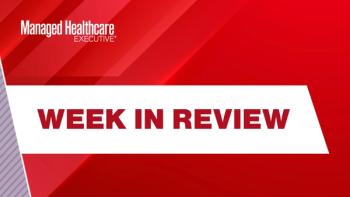
Three Big Reasons U.S. Healthcare Spending Outpaces Other High-Income Countries
A new study looks at how U.S. healthcare spending compares to 10 other high-income countries. Here are three of the biggest areas in which U.S. spending is higher.
Higher healthcare spending in the United States compared to other high-income countries is, in part, due to administrative complexity and high prices across a wide range of healthcare services.
That’s according to a new study in The Journal of the American Medical Association from Harvard T.H. Chan School of Public Health, the
Here are some key findings from the study, which compared the U.S. to 10 other high-income countries, and reactions from healthcare experts.
Key finding #1:Administrative costs-activities related to planning, regulating, and managing health systems and services-accounted for 8% of total healthcare costs in the United States, compared with a range of 1% to 3% for other countries.
The American healthcare system is very fragmented, which creates complexity that adds to costs. “Physician groups and hospitals often deal with dozens of payers, each with different processes for eligibility verification, service authorizations, and claims payment,” says David Gallegos, senior vice president of consulting services at Change Healthcare, a healthcare technology company. “A solution for the short-term is to leverage technology to automate business rules and processes. Expanding interoperability between various parties within the healthcare ecosystem, modernizing legacy systems, and leveraging robotic process automation can squeeze significant costs out of the system.”
Key finding #2:Per capita spending for pharmaceuticals was $1,443 in the United States, compared with a range of $466 to $939 in other nations. For several commonly used brand-name pharmaceuticals, the United States had substantially higher prices than other countries.
According to a Kaiser Family Foundation report, the United States is the
. Direct marketing costs to consumers are much higher in the United States as well.
To lower pharmaceutical costs, Gallegos recommends reducing red tape associated with approving drugs in the pipeline, especially for generics. “With more options for consumers, competition should drive costs down,” he says. “By shortening the patent window of name-brand drugs and not limiting generic entrants, consumers will have more options and price will become a primary competitive factor.”
Gallegos also suggests negotiating from a larger population base. “Medicare, for example, should be able to negotiate drug prices for all Medicare recipients,” he says. “Many other countries negotiate drug prices on behalf of their entire country.” Furthermore, greater transparency will make rebates and other incentives better known. Developing more value-based pricing models for high-cost pharmaceutical therapies is another strategy.
Key finding #3:The average salary for a general practice physician in the United States was $218,173, while in other countries the salary range was $86,607 to $154,126.
Mark Dietrich, president of Mark O. Dietrich, CPA, PC Healthcare Consulting and Valuation, an accounting firm, and member of the National Society of Healthcare Business Consultants, says there has been a marked increase in incentives to primary care physicians in the United States through quality bonuses and enhanced relative value unit (RVU) values under Medicare's Resource Based Relative Value Scale used to set the physician fee schedule and similar devices, which likely accounts for the reported differences.
“We can reduce the impact of higher physician salaries by optimizing care plans, reducing treatment variation, and leveraging lower skilled professionals where appropriate,” Gallegos says. “Our current fee-for-service model does not incentivize such a model-this is why we need to move to value-based reimbursement.”
Misaligned incentives
The study confirmed that the United States has substantially higher spending, worse population health outcomes, and worse access to care than other wealthy countries. For example, in 2016, the United States spent 17.8% of its gross domestic product on healthcare, while other countries ranged from 9.6% (Australia) to 12.4% (Switzerland).
“The study confirms what we already know-that our healthcare system is not working optimally,” Gallegos says. “I believe this is primarily caused by misaligned incentives. We reward volume over value, limit competition, and lack quality and price transparency. But value-based reimbursement models have the potential to transform our industry.”
Karen Appold is a medical writer in Lehigh Valley, Pennsylvania.
Newsletter
Get the latest industry news, event updates, and more from Managed healthcare Executive.





















































